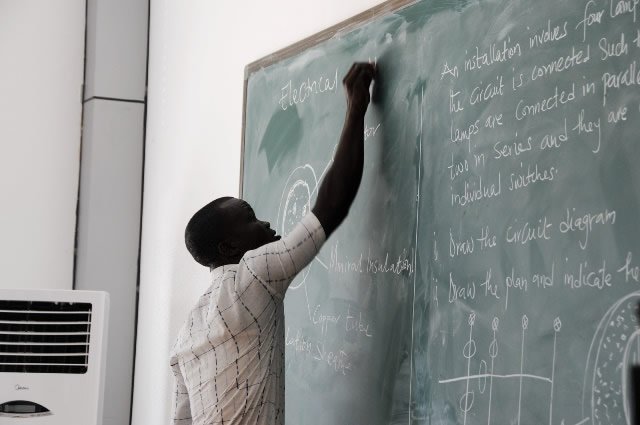The Kwahu Afram Plains North District in the Eastern Region needs more teachers to ensure effective teaching and learning.
Currently, there are only 454 teachers handling a total of 15,893 pupils in the 189 public pre and basic schools in the district. However, the district requires a total of 1,066 teachers or a teacher to every 14 pupils for effective teaching and learning in the district.
Although the situation puts the teacher-to-pupil ratio in the district at an average of a teacher covering 35 pupils, the teachers are unevenly distributed. For instance, aside from the schools being far apart (of about 15 kilometres in some cases), there are schools with about three teachers with 200 pupils or students.
At Senafukope D/A KG and Primary School, two teachers handle a population of 248, while some children attend the school from the nearest community, Tataliga, which is about 12 kilometres away.
In the 80 Kindergartens (KGs) in the district, 79 teachers, made up of 31 males and 48 females are teaching at that level, while 234 teachers are available for the primary level. At the junior high level, where subject teachers are required in all the 29 schools, only 141 teachers are posted to these schools.
This came to light when a UNICEF team visited the district to assess how its projects under the Community of Excellence Programme (CEP) were being executed. The CEP, which is worth $2.3 million from the Zurich-based philanthropic organisation, the Jacobs Foundation, seeks to promote quality education in hard-to-reach areas in Ghana, Ivory Coast and Colombia.
The programme, being implemented by the Ghana Education Service (GES), focuses on the training of teachers, parent teacher associations, the school management committees as well as the district education oversight committees on their respective roles in ensuring better learning outcomes.
Addressing the team after a presentation on the impact of the CEP in the district, the District Director of Education, Solomon Akuruko Azubila, made a passionate appeal to newly trained teachers to accept postings to the area.
He said most of the teachers posted to the district often declined and went back for reposting, describing it as unpatriotic. “I am appealing to every Ghanaian. So far as you are a teacher, when your country calls, you have no option but to accept, especially the newly trained ones.”
“The hinterlands are part of Ghana and so for a meaningful progress to be attained, we need a holistic development,” Mr Azubila told journalists. He said currently, the Education Directorate of the district had no option but to engage 72 community teaching assistants (CTA), who were being paid between GH¢250 and GH¢300 monthly by the parent-teacher association (PTA) in the respective schools.
Mr Azubila said it was pathetic to see that in some schools, only two teachers manned all the classes from primary one to six “and in some places just one teacher is made to run the whole school”.
He explained that when he assumed office four years ago, after needs assessment, “we realised that we were operating on half strength and so, we had to embark on community engagement to plead with the communities to engage these CTAs.”
The director explained that to ensure that quality was not compromised, the directorate organised in-service training programmes for teachers and all the CTAs were also invited to participate.
Mr Azubila thanked the UNICEF team for choosing the district for the programme, explaining that the interventions by the programme had really uplifted education in the district.
He explained that it was the training programmes by the UNICEF that enlightened the PTA and the SMC to become more involved in the running of their respective schools, including the engagement of the CTAs.

